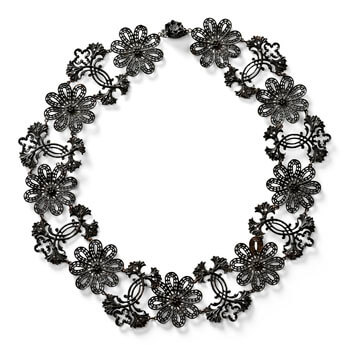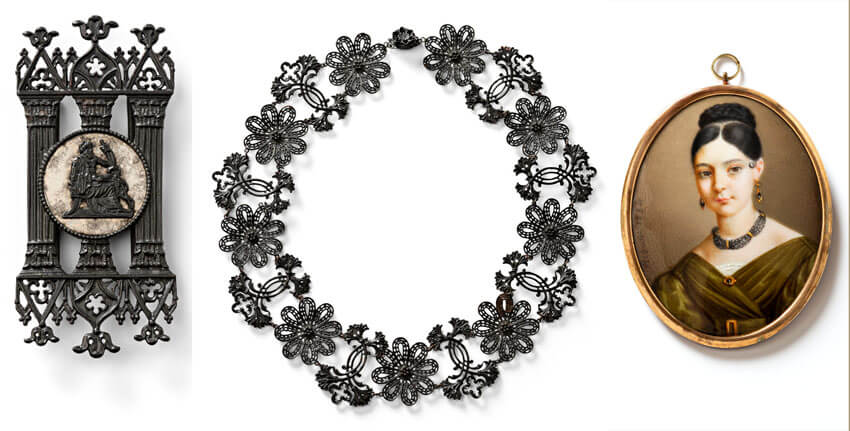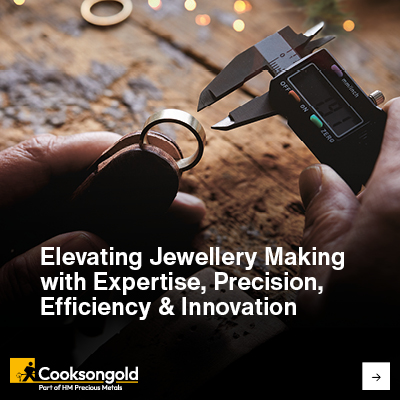Delicate Like Iron

Venue
When
Audience
Category

Delicate Like Iron
Jewellery from a private collection
16 July 2021 through 6 February 2022
In the period from the late 18th to the mid-19th century, what is called iron jewellery was very popular: elaborate necklaces, bracelets, pendant earrings, brooches and even rings, filigreed like lace – yet cast from iron. The pieces’ unobtrusive material, clear-cut formal idiom and somewhat inaccessible character reflect the values embraced by society back then: constancy, modesty and reticence.
In line with the taste of the time, they feature elements from Gothic architecture or floral ornamental motifs from classical antiquity, such as palmettes, acanthus and wine leaves. In addition to Berlin – from which the French term »fer de Berlin« derives – the city of Gleiwitz (now Gliwice in Poland) was also home to an important foundry.
At first, iron jewellery was mainly used as mourning jewellery, and many women were wearing what are called »Louise pendants« or »Louise brooches« after the early death of the well-liked Prussian Queen Louise in 1810. During the time of the Napoleonic Wars of Liberation, iron jewellery was being worn increasingly as a political statement or symbol of patriotism, and was donned »to save the fatherland« following an appeal by Princess Marianne of Prussia in 1813 to donate gold jewellery in exchange for pieces made of iron. What enabled the production of delicate iron jewellery in the first place was the state of technological development back then as a necessary prerequisite for transforming the technically demanding designs into tangible pieces. Some of the designs were created by the state architect of Prussia, Karl Friedrich Schinkel.
During World War I, iron jewellery became fashionable again in the shape of rings, brooches or medallions with the inscription »Gold gab ich für Eisen« (I gave gold for iron), for example.
The exhibits are from the Klaus-Peter and Judith Thomé Collection, which was put together over the course of the past 25 years and is now incorporated into the Jewellery Museum’s collection as a donation. After Judith Thomé, who was born in the USA, had repeatedly purchased historical jewellery since the late 1970s, she bought her first piece of iron jewellery at an auction in 1995: a Berlin iron necklace enhanced with medallions. She was so fascinated by it that she started to collect iron jewellery, and has meanwhile gathered about 160 pieces. Her penchant for jewellery was sparked when she was still a child, back in America, by a geologist friend of the family.
Schmuckmuseum Pforzheim
75173 Pforzheim
Germany
- Scheduled to open on Thursday, 15 July 2021, 7 p.m.
- Opening hours: Tue–Sun and holidays from 10 a.m. to 5 p.m.
- Admission to the permanent exhibition € 4.50,
- Free admission for children no older than 14
- Partners: Pforzheimer Zeitung and SWR2
- www.schmuckmuseum.de








